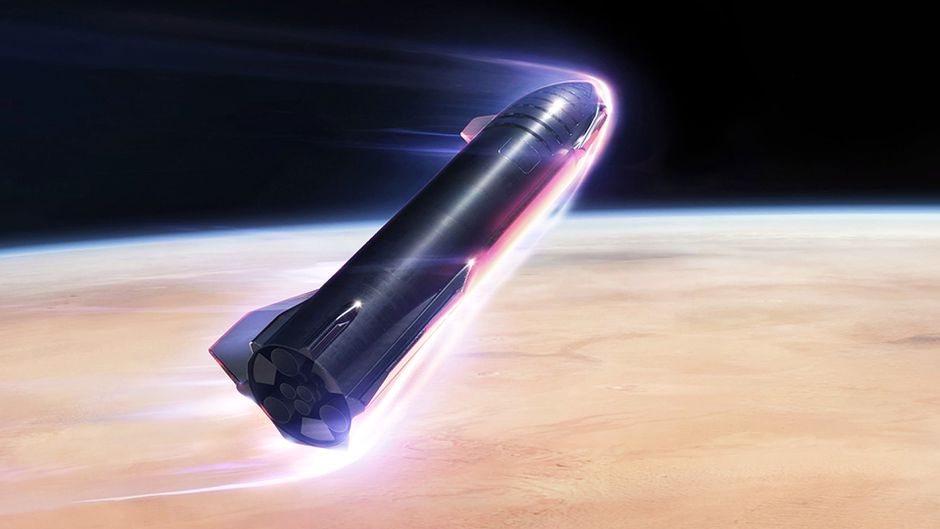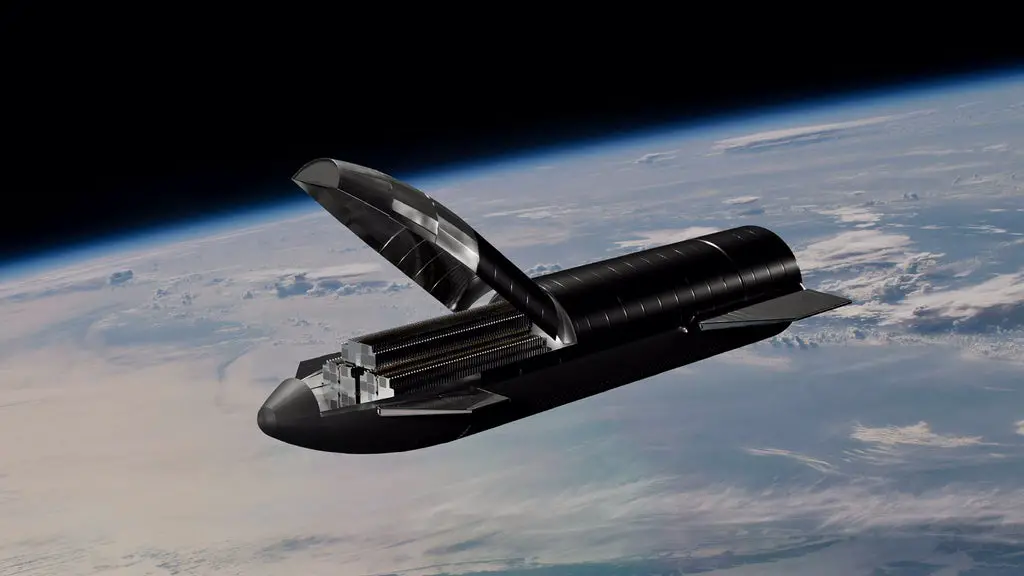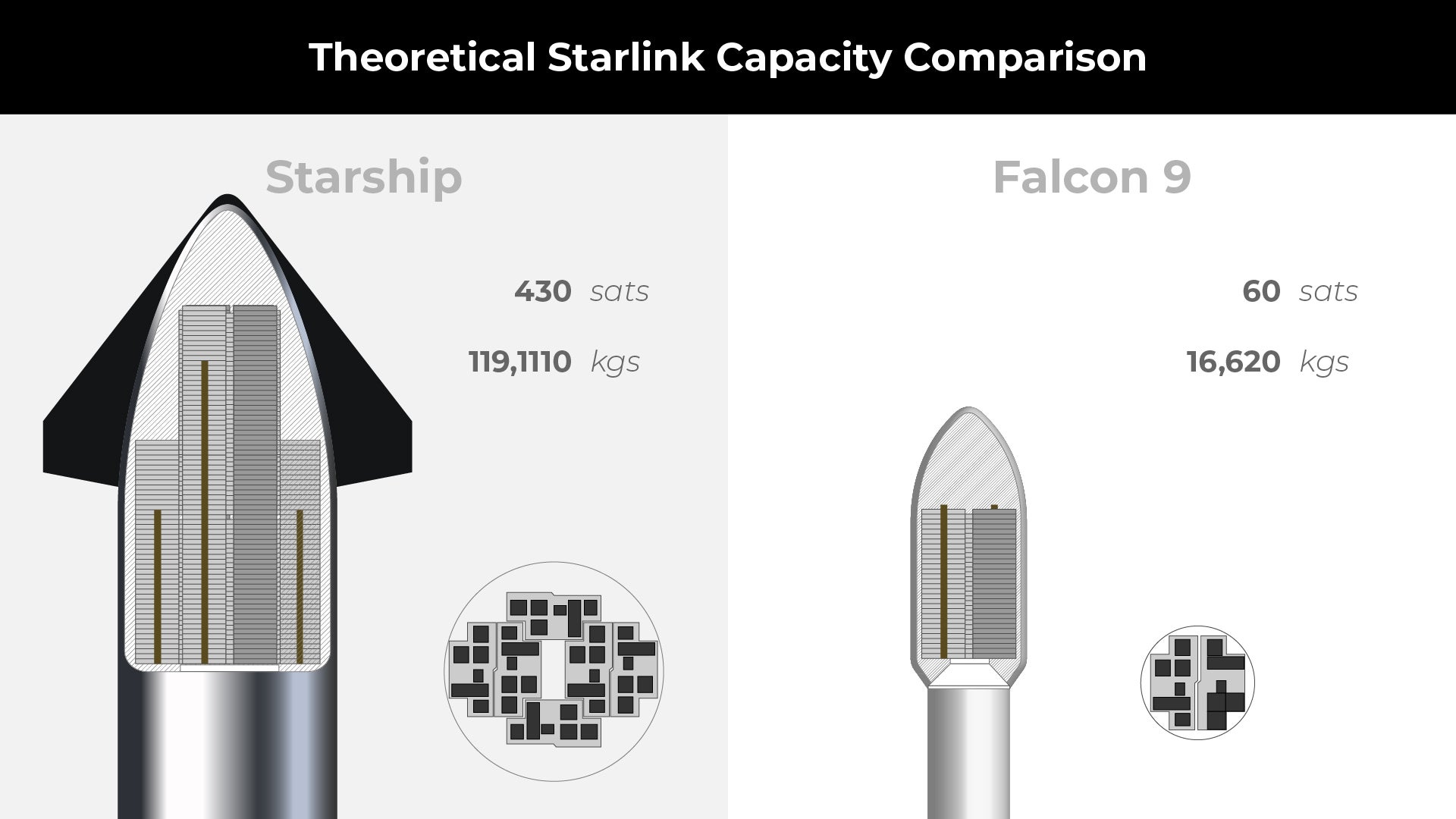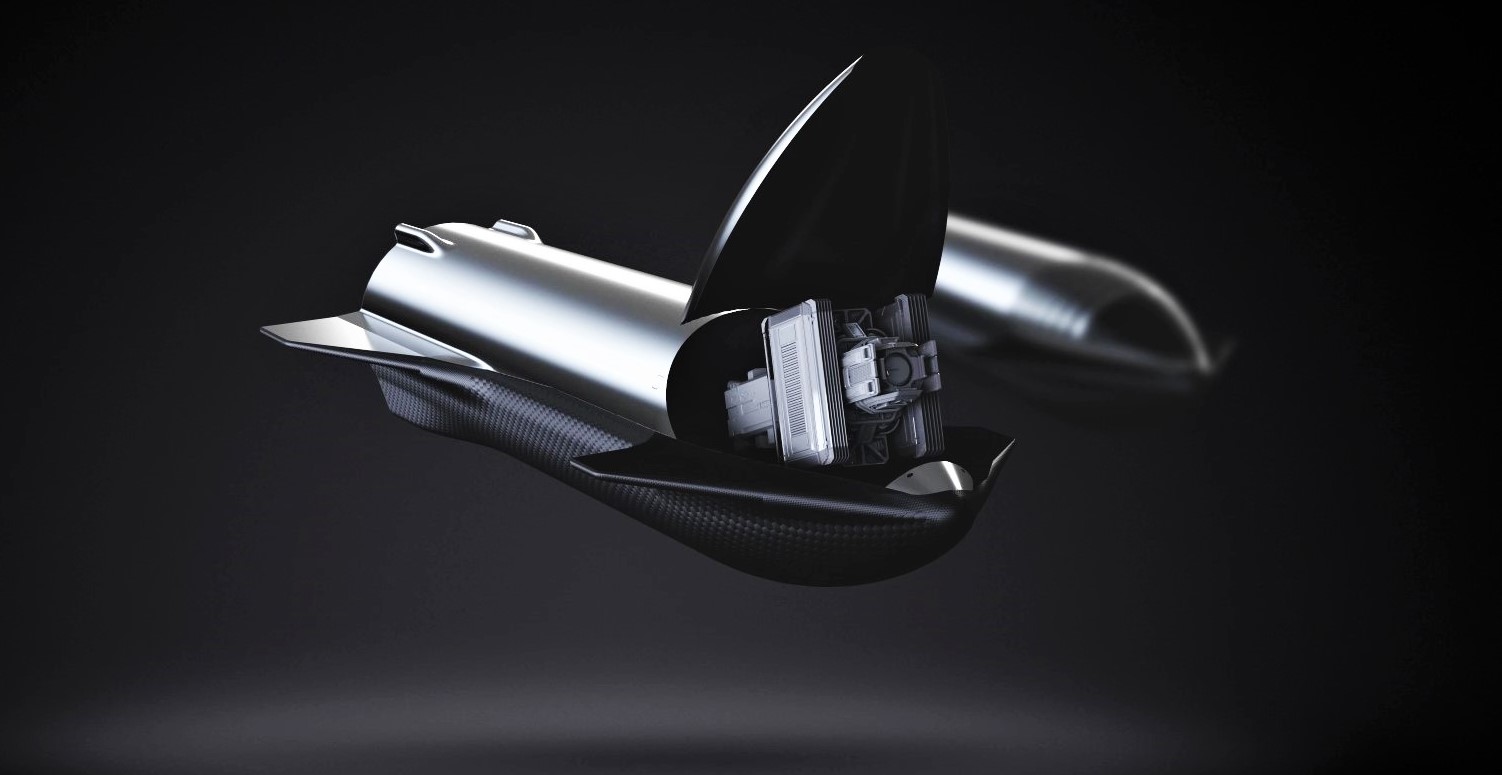The Starship, developed by SpaceX, will be a versatile launch vehicle capable of returning people to the Moon to establish a permanent base and allowing mankind to establish a viable colony on Mars.
It is intended to become the most powerful rocket ship in the world. “From the start, the Starship was meant to be capable of transporting more than 100 tonnes of cargo to Mars and the Moon.

The cargo variant may also be utilized for quick point-to-point transportation on the planet. “Various payload bay configurations are possible, allowing for completely autonomous cargo deployment to Earth, Lunar, or Martian surfaces,” according to the business.
SpaceX’s Starship launch vehicle offers a wide range of possible applications and capabilities, allowing unprecedented access to space. Within its payload compartment, the cargo version of Starship will be able to deploy complete satellite constellations in a single launch.
For comparison, SpaceX’s Falcon 9 can fit up to 60 Starlink satellites in a tight arrangement within its 5.2-meter diameter fairing, but Starship will be able to fit 400 Starlink satellites inside its fairing in a single launch.
Starship will be able to launch massive spacecraft into orbit within its clamshell-like fairing, which has a 9-meter outside diameter – “the biggest useable payload capacity of any present or in development launcher,” according to the firm. SpaceX also intends to develop an enhanced Starship volume capacity for payloads that need a height of up to 22 meters.
According to SpaceX’s Starship User Guide, Starship will be able to retrieve satellites already in orbit and repair or dispose of them on Earth.

“Fully reusable Starship and Super Heavy systems are projected to enable space-based operations that have not been viable since the Space Shuttle and Space Transportation System were retired, or that have never been possible before.”
Satellites may be recovered and repaired in orbit, returned to Earth, or moved to a new operating orbit using a completely reusable Starship, according to SpaceX’s vehicle guide. This will be achievable because of the Starship’s huge clamshell-like cargo door mechanism, as illustrated in the figure below.
Old satellites and space trash circling Earth may be “chomped up” by the clamshell door. “With the sliding fairing door, we can fly Starship around the orbit and chew up junk,” SpaceX founder Elon Musk stated in July 2021.
Engineers might employ this clamshell-like fairing to create a system to collect satellites for repair, as well as other orbiting objects that are no longer in service.
Starship, according to SpaceX President and Chief Operating Officer Gwynne Shotwell, might help clean up space. “Starship is a really remarkable new vehicle capability.

“Not only will it lower the cost of access to space, but it will also be the vehicle that will transport people from Earth to Mars,” Shotwell said last year. “But it also has the capability of carrying cargo and crew at the same time, so it is quite possible that we could leverage Starship to go to some of these dead rocket bodies — other people’s rocket bodies, of course.”
“Basically, pick up some of this garbage in orbit,” she said. “There are dead satellites cluttering the space environment, as well as rocket bodies littering the space environment.” […] It is not an easy task.
It will not be simple, but I feel Starship provides the opportunity to go and achieve that, and I am quite thrilled about it,” Shotwell added.
There are roughly 4,500 operational satellites circling Earth today, which are managed by a variety of organizations, enterprises, and government agencies from all over the globe.

There are 3,170 defunct satellites in orbit and roughly 35,000 trash particles, with 70% of them in low Earth orbit. The United States Space Command keeps track of all orbiting objects. The SpaceX Starship might provide the planet a once-in-a-lifetime chance to clean up space by returning obsolete items.
SpaceX CEO Elon Musk says Starship will take over Starlink launches
Tesla Motors CEO Elon Musk has repeated intentions for SpaceX to use Starship to replace Falcon 9 in the constellation by launching Starlink satellites.
A few SpaceX officials and executives have made it apparent since dedicated Starlink flights started in May 2019 that the corporation intends to eventually shift the duty of launching and maintaining its Starlink constellation from Falcon 9 to Starship. If everything goes according to plan, Starship will be a far more affordable system to launch since it is intended to be entirely and quickly reusable from the ground up.
Starlink missions will move to Starship
— Elon Musk (@elonmusk) June 10, 2021
Despite being many times bigger, heavier, more powerful, and more capable than Falcon 9 or Falcon Heavy, Starship may be significantly cheaper to construct after Musk’s announcement of a radical redesign that substituted basic steel frames with carbon composite components. As a result of its flaws, however, the Falcon 9 has proven to be a very dependable and available workhorse for SpaceX, completing 28 operational Starlink launches since November 2019.
Starship, however, promises to outperform Falcon 9 when it comes to sending satellites and humans into space on a regular basis. Starlink satellites might be launched on the rocket as soon as it completes its orbital flight testing, despite the fact that it may take many years for Starship to be considered safe and dependable enough to launch people.
Even if SpaceX does not succeed in the early stages of orbital Starship flight testing, it would be remarkable if they did not include at least a few dozen Starlink satellites because of the inexpensive cost of each satellite. However, Starship will eventually be able to reach orbit, return, and land next to a Super Heavy launcher many times in succession, proving its suitability for launching payloads (without people).
Paying customers with satellites worth tens of millions to hundreds of millions of dollars may need more proof before they trust launch contracts to Starship, but SpaceX itself – likely to be the builder and owner of the world’s largest satellite constellation for the foreseeable future – has more flexibility to tailor its appetite for caution to its specific needs. A company like SpaceX may also be unable to sit back and wait for the arrival of Starship’s capabilities.
Gwynne Shotwell claimed at a conference in October 2019 that a single Starship could launch up to 400 Starlink satellites (106,000 kg/230,000 lb) simultaneously – comparable to more than six and a half dedicated Falcon 9 flights. Starship’s enormous fairing could easily accommodate more than 300 satellites, according to unofficial renderings of the payload.
SPACE NERDS! This is what 240 Starlink satellites in the cargo fairing of Starship might look like. Comments, criticisms, and retweets welcome! -Neo@Erdayastronaut @DJSnM @elonmusk @NASASpaceflight @ChrisG_NSF @BocaChicaGal @SciGuySpace @13ericralph31 pic.twitter.com/EVWiKApBIe
— Neopork (@Neopork85) June 15, 2020
Although early Starship flights may cost five times as much (i.e. >$75 million) to launch, the per-satellite launch cost of Starlink missions would be no worse than the Falcon 9 while simultaneously delivering many times as many satellites to orbit. If SpaceX does not have to spend a full ship and rocket as well as around 35 Raptor engines, the overall cost of a Starship launch might already be less even before factoring in the cost of each Starlink satellite.
Starship’s 300-satellite Starlink mission would easily outperform Falcon 9’s 28 launches in the previous 20 months, even with a serene monthly launch schedule. For now, it seems as if SpaceX will not be able to launch satellites worth $75,000-$100,000 or more until next year, but the wait will be worthwhile.

